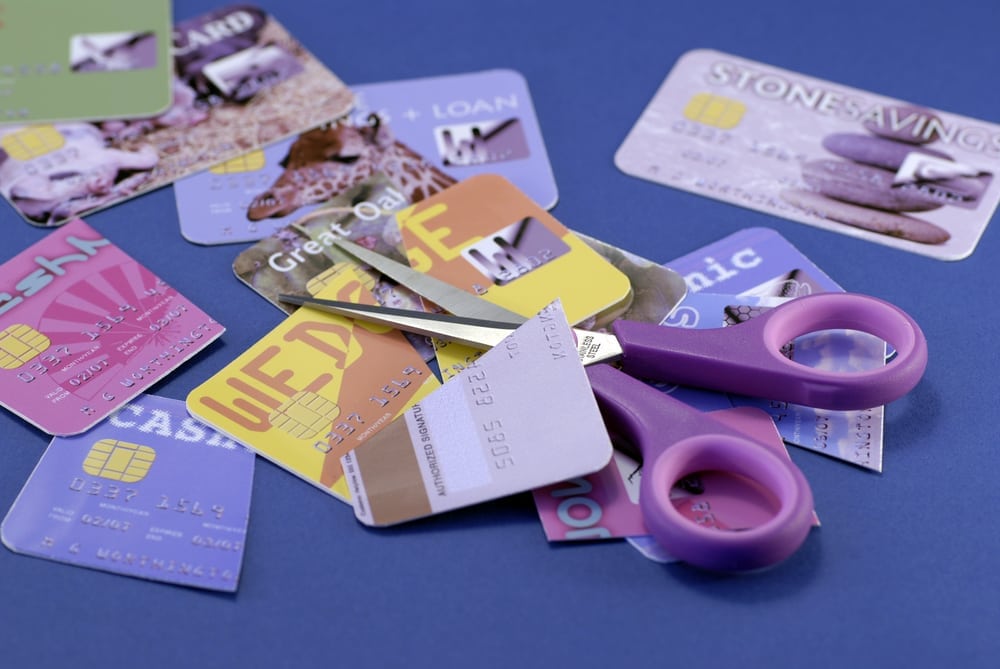How Successfully to Pay Off Credit Card Debt In Your 40s

Still Struggling In Your 40s?
Credit card debt can be frustrating at any age, but when you reach your 40s and are still struggling to pay your debt, it's a problem.
In your 20s, you have the luxury of time to be able to chip away at your debt, learn from your mistakes and hopefully make some wise investment choices (like opening an IRA for retirement).
By the time your 40s rolls around, you most likely have a mortgage to pay, college tuition on the horizon for your kids and perhaps aging parents to think about.
The good times of previous decades are gone, and if you weren't careful then, you may be stuck with a sizable amount of credit card debt.
What you need is a strategy to accelerate your recovery by cutting spending, reducing debt and building savings, all at the same time.
A good plan that combines all three tactics will lighten the load now and generate optimism about the future.
Here's how to pay off credit card debt, once and for all:
1. Control spending
The first step in paying off debt is to reduce spending. That will be easier once you stop using your credit cards.
Once they're paid off, destroy your old cards so you won't be tempted to use them again.
And try to leave your active cards at home, unless it's an emergency.
Create a personal balance sheet and list your debts in order of interest rate, from highest to lowest.
Add up your liquid assets, including savings and investment accounts.
List any major purchases or social events that will cost you money in the next year. Subtract this amount from your liquid assets.
What remains is the amount you may have to pay your debts.
2. Build Your Savings
Make saving even easier than spending.
Use direct deposit to have money taken from your paycheck and placed in a savings account automatically.
Whenever you're paid, put only what you need to live on for one month (or two weeks, if you get paid every two weeks) into your checking account.
You can open an online savings account with as many sub-accounts as you like, for free.
Set up three savings sub-accounts with nicknames for goals attached to them.
One may be labeled ʺcushionʺ for emergency cash, a second for ʺexpensesʺ for unexpected bills, and a third for ʺinvestments.ʺ
If you can, one month's expenses should go into the expenses account for unexpected bills.
Begin building your emergency cushion by depositing a portion of each paycheck into your cushion savings account.
Find the Best Savings Account Rates - Compare Now
Unlock exclusive savings rates and gain access to top-tier banking benefits.
Put whatever is left into your investments account, including "free" money such as birthday and holiday checks, bonuses, or money made from a garage sale.
The goal is to shrink debt and save at the same time.
So, let's look at how we're going to do that before we itemize a dozen more suggestions for spending and saving.
3. Reduce Debt
Pay off your highest interest credit card debt first, making sure you avoid the "minimum balance trap."
Because credit card companies make their money from interest payments, they purposely set those payments low so it will take you years to pay off the balance.
Paying just a little more than the minimum can make a big difference.
Consolidate your debt by transferring outstanding balances to lower-rate credit cards.
These days, the competition between credit card issuers is so intense that you can often negotiate your interest rate.
If you don’t want to transfer your balances, chances are that your current credit card company will match the interest rate of a competitor.
Keep in mind that your chances to be eligible for something like this will be higher if you are in good standing with your credit card company and haven't made any late payments.
You can eliminate debt and save money by paying more than the minimum monthly amount on your credit cards.
You may not be able to solve your debt problem overnight, but you can solve it over time.
4. Keep Track of Your Budget
Keep track of your spending and get a receipt for everything you purchase.
Sign up for budgeting apps.
Wherever you can cut spending, throw the extra money into your emergency savings account.
To take it a step further, after you keep track of what you spend, try using the envelope method to avoid using credit cards.
Allocate cash into envelopes for things like transportation, food, and restaurants.
When the cash is gone, it's an easy indication that it's time to stop spending.
If you have kids, talk to them about spending less and saving more.
It's wise to start teaching kids about money as early as possible so they don't make the same mistakes and land themselves in debt.
Get the whole family involved in paying down debt and saving more.
Set in motion a version of this strategy that's realistic for you and stick with it.
If you need to tinker with spending limits, reset savings goals, or readjust your payment timetable, do so.
If you run into trouble, talk to a professional. The counselors at the nonprofit National Foundation for Credit Counseling can help -- just ask.
Not only will it make your life easier, it'll help you feel better about your future.
You can do it once you learn how to save money and pay off debt.
5. Refinance Your Credit Cards
Use personal loans to consolidate your debt into one convenient payment.

